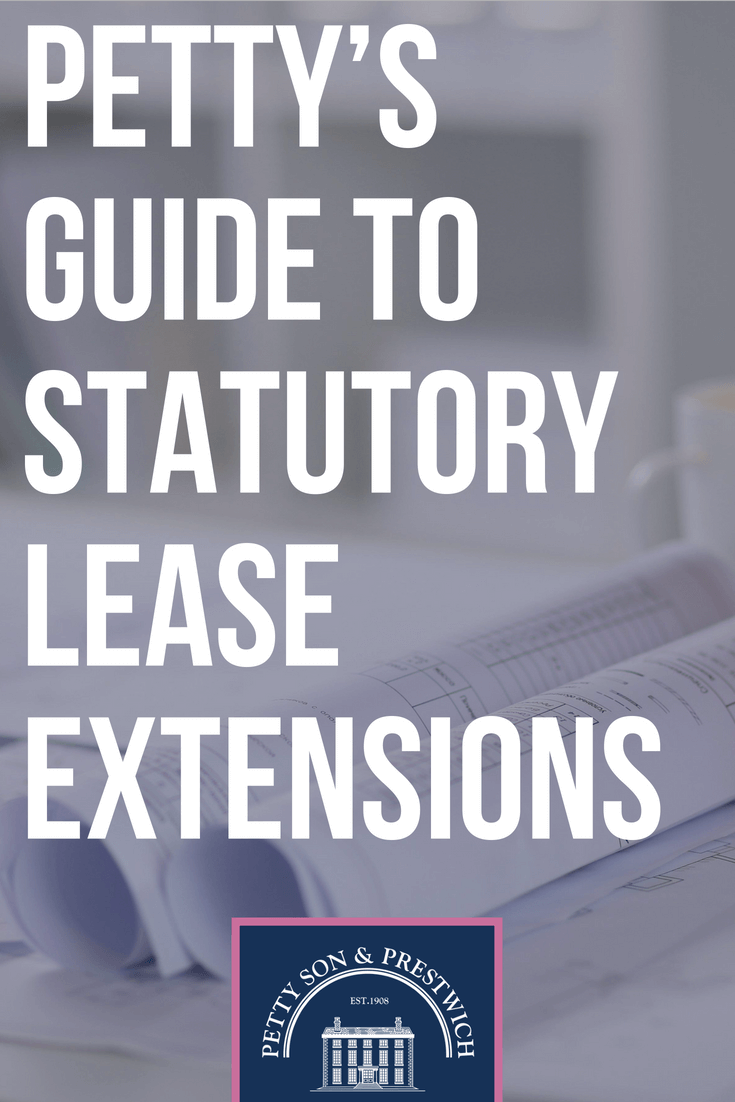Lease extensions can be baffling to those who have never had to deal with one before, but burying one’s head in the proverbial sand simply isn’t an option on such a time-sensitive issue. That’s why we thought it would be a good idea to put together a brief guide detailing some key points that’ll help you get to grips with the process. Let’s get started.
Why leaseholders should think about extending the lease term of their property
As a leaseholder, you only have ownership of the property for a set number of years. The longer you live in the property, the less time you’ll have left on your lease, which can prove to be a problem when you decide to sell. Not only does the length of your lease decrease, the cost of extending it goes up with every passing year too.
With the increasing knowledge that buyers in Wanstead and West Essex have, they are now looking for the longest lease possible when purchasing property. Anything less than 80 years left on the lease is now deemed undesirable, and any prospective purchasers will push you on price because of it. In some instances, a lease extension may prove to be an essential element to making the sale happen at all.
Buyers borrowing can be affected by the length of your lease
Another reason for extending your lease is the fact that mortgages are no longer the straightforward affair that they once were. Many lenders now have stipulations with regard to lease lengths, and an unexpired lease of 70 years or less will undoubtedly cause people problems when it comes to securing a mortgage on your property.
The lending criteria laid down by banks and other mortgage companies may also affect your ability to remortgage your property should you wish to do so. Therefore, when it comes to borrowing money secured on a leasehold property, the time remaining on the lease is a vital factor that will decide whether or not the lender will say yes or no.
Know your rights
It’s surprising just how many leaseholders are unaware of the rights that they have when it comes to extending their lease. The law is behind the leaseholder in many ways, so simply accepting what the freeholder puts on the table is far from advisable. Freeholder’s terms rarely amount to much more than an extension to 99 years, a hike in ground rent, and a hefty premium put on top for good measure, but it doesn’t have to be this way.
Now, more than ever, leaseholders and freeholders are beginning to see the benefit of working together to negotiate a deal that suits both parties equally, so don’t be afraid to fight your corner. It’s in the freeholders interest to keep some ground rent coming in, which would otherwise be lost during the statutory lease extension process, and leaseholders can avoid the rigmarole and expense of the process itself. It’s a win/win situation.
Naturally, if you are unable to renegotiate terms, the statutory route remains open to you. Providing you have owned your leasehold property for over two years, you have the right to ask for a statutory lease extension on said property under the terms of the Leasehold Reform Housing and Urban Development Act of 1993.
The law is very much on the side of the leaseholder these days and the bad old days of unscrupulous freeholders demanding huge premiums for lease extensions are thankfully behind us. So, instead of accepting what can amount to little more than a short-term fix, you can opt for a far more attractive extension instead, either by way of sensible negotiation or a statutory lease extension.
What makes a statutory lease better for me?
As opposed to accepting the terms laid down by the freeholder, a statutory lease extension will add an additional 90 years to your existing lease. This means that if you opt for a statutory lease extension when you have 75 years left on your lease, your new lease will be 165 years – far better than a 99-year lease that the freeholder may offer!
Statutory lease extensions also have another benefit too: the resetting of the ground rent to what is termed in legalese as a peppercorn per annum (zero) for the duration of the lease. Not only is the ground rent reduced, there cannot be any reviews or increases made for the whole duration of the new lease.
Furthermore, the premium that is paid to the freeholder is controlled by Schedule 13 of the 1993 Leasehold Reform Act, meaning that you will not have to pay over the odds for the extension either. Keep in mind, too, that if you decide to extend your lease before it drops below the 80-year threshold, the Reform Act does not allow the freeholder to claim any marriage value on the property. This could be huge in some instances, as the marriage value is deemed to be half the increase in the property’s value.
Is everyone eligible for a statutory lease extension?
Not quite, but the requirements aren’t that hard to meet. Basically, if you have owned your leasehold residential property for longer than two years and the original leasehold term was longer than 21 years, you’re eligible.
If you are buying a property with a short lease, there is even a way round the two-year rule, providing the person who is selling the property has owned it for longer than two years themselves. They must serve the initial notice to the freeholder and then transfer the benefit of said notice to you, allowing you to bypass the two-year ownership rule.
Great! How do I go about claiming my statutory lease extension?
The first thing that you’ll need to do is get the property valued. This is required because it will determine how much you should offer the freeholder, and it’ll also help you calculate your own financial liability as well. As soon as you have a valuation you can then instruct your solicitor to serve a formal S42 Notice on the freeholder. This will begin the process of claiming your statutory lease extension.
The likelihood is that the freeholder will serve you with a counter notice almost immediately, usually to request that you make a higher payment than the one you have offered. This counter notice must be served within two months of the initial S42 Notice being received by them.
From then on, there is a maximum period of six months allowed for any negotiations to take place. However, after the first two months have passed, either party can refer the case to Leasehold Valuation Tribunal (LVT) to get the matter resolved. It’s worth bearing in mind that the vast majority of cases do not require a formal hearing in order to reach a resolution.
As the leaseholder, you will be liable for the freeholder’s cost pertaining to the notice served. Such costs may include legal and valuation fees related to the notice, but other expenses incurred by the freeholder, such as the preparation for the LVT hearing or admin costs, cannot be claimed. If there is a dispute regarding the costs being claimed by the freeholder, you can request that the LVT determine exactly how much the freeholder is entitled to. This request stands even if you have already agreed to the premium.
So, there you have it. A run down on exactly what a statutory lease extension is and how to go about getting one. Not only will obtaining one give you peace of mind, it can also be financially prudent too.
If you need more advice or simply want to talk things through, you can call Petty’s Director John Wagstaff on 020 8989 2091 or drop us a line at This email address is being protected from spambots. You need JavaScript enabled to view it.
For more guides like this one, come and like our Facebook page at facebook.com/PettySonAndPrestwich


As Petty’s MD, John steers the ship. He is, however, first to admit that the team around him run the show, and he’s incredibly proud of each and every one of them. Sporty and studious, caring and loyal, John is a father of two wonderful children (and Cooper the dog).
020 3370 8784 / Email Directly